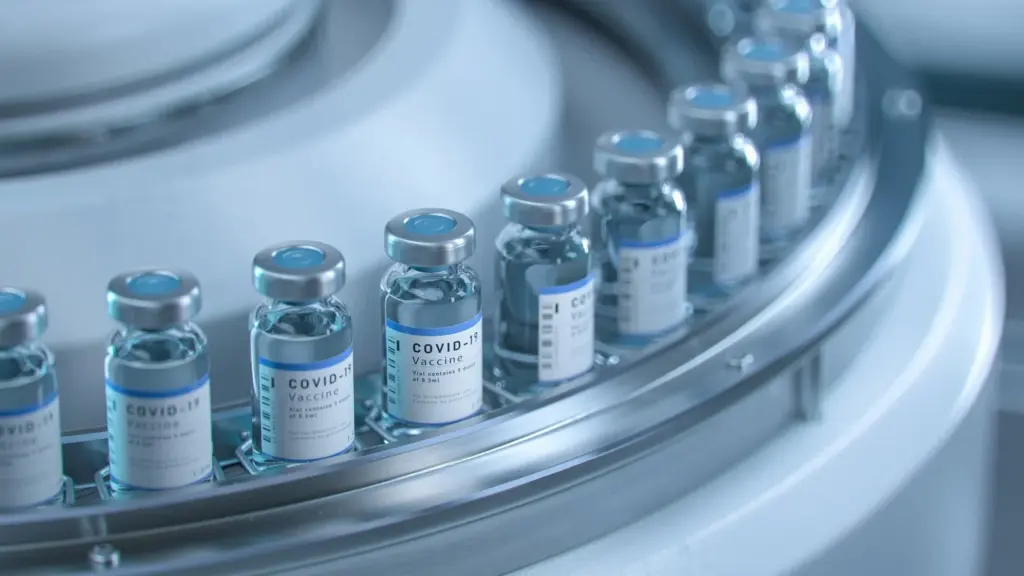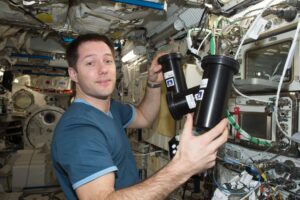
Scientists at Mass General Brigham have unveiled a groundbreaking new diagnostic tool named LUCAS (Luminescence CAscade-based Sensor) that promises to transform virus detection. Unlike traditional tests, LUCAS is not only fast and portable but also boasts exceptional accuracy. The device utilizes an enzyme that produces a glow akin to that of fireflies, enabling the visualization of virus particles in complex samples such as blood or saliva.
The study, published in Nature Biomedical Engineering, highlights that LUCAS generates signals 500 times brighter and sustains them eight times longer than conventional tests. This enhanced luminescence facilitates quicker and more reliable detection of viruses, including HIV and COVID-19.
Dr. Hadi Shafiee, a leading researcher, vividly describes the challenge of detecting HIV particles in human blood as akin to “trying to find an ice cube in a jelly-filled Olympic pool while blindfolded.” However, LUCAS significantly simplifies this task by providing a consistent, bright signal that illuminates elusive particles.
How the Glow Works
Traditional rapid tests often rely on color changes or chemical reactions, which can be plagued by accuracy issues due to fading fluorescent signals and background noise. LUCAS circumvents these challenges through bioluminescence, employing luciferase—the same enzyme responsible for the glow of fireflies. When luciferase interacts with luciferin, it emits light.
Previous tests faced the issue of rapidly diminishing light. LUCAS innovatively addresses this by incorporating beta-galactosidase, an enzyme that gradually releases luciferin, thereby maintaining a prolonged reaction and steady glow. This results in a clear and persistent signal, vastly improving virus detection.
LUCAS produces 515 times more light than non-LUCAS systems, maintaining 96% of its original brightness even after an hour, making it ideal for clinics, homes, or rural settings with limited lab access.
Speed, Accuracy, and Simplicity
The research team evaluated LUCAS on over 300 samples containing viruses such as HIV, hepatitis B and C, and COVID-19, sourced from swabs or blood draws. The device delivered results in under 23 minutes with an average accuracy exceeding 94% across all tested viruses.
This rapid and reliable performance is crucial, enabling healthcare providers to make swift decisions. It empowers individuals in remote areas to access high-quality testing without the need for extensive training or handling. LUCAS operates independently of specialized lab equipment or electricity, making it suitable for both hospitals and field clinics. Remarkably, untrained users achieved results comparable to those of trained technicians.
Why LUCAS Outshines Others
Previous methods typically linked luciferase enzymes directly to antibodies, resulting in instability and a rapid decline in signal strength. By the second day, the signal would diminish by 77%, disappearing entirely by the third day. LUCAS overcomes this by attaching beta-galactosidase to the antibodies instead, maintaining 98% of its strength after four days.
Researchers confirmed LUCAS’s durability by tracking enzyme glow in test plates, noting less than a 4% signal loss after an hour, compared to over 25% in non-LUCAS systems.
The team also discovered they could adjust the brightness of the glow by varying enzyme quantities, enhancing reaction speed and overall luminosity. Notably, LUCAS requires over 500 times less enzyme than older systems, delivering stronger results with fewer resources.
Designed for the Future
The development of LUCAS involved meticulous preparation of its components. Researchers engineered antibodies to bind to viruses and combined them with magnetic beads to isolate virus particles. They verified the functionality of each component through color tests and chemical analyses.
Testing under real-world conditions with virus-spiked samples demonstrated LUCAS’s capability to detect even minimal infection levels. Whether targeting HIV, hepatitis B, hepatitis C, or SARS-CoV-2, the system consistently delivered robust performance.
A notable feature of LUCAS is its adaptability to emerging needs. As new viruses or disease markers arise, LUCAS can be modified to detect them, potentially extending its utility beyond infectious diseases to early detection of conditions like Alzheimer’s disease.
“We want to make early detection easier than it’s ever been and push personalized care into a new era,” said Dr. Sungwan Kim, a postdoctoral researcher at Brigham and Women’s Hospital.
A Tool With Global Impact
LUCAS is not merely another diagnostic test; it signifies a paradigm shift in the approach to diagnostics. The demand for simple, accurate, and affordable tools is more pressing than ever, given the rapid spread of diseases and the lack of access to sophisticated labs in many regions.
This technology has the potential to bridge that gap, empowering communities to manage their health more autonomously. By reducing the cost and time required for testing, it also facilitates more agile public health responses.
While LUCAS is still in the early stages of development, its initial results are promising. It exemplifies how the fusion of biology and engineering can yield tools that are intelligent, effective, and broadly applicable. With continued testing and refinement, this luminous test could set a new benchmark in medical diagnostics.







